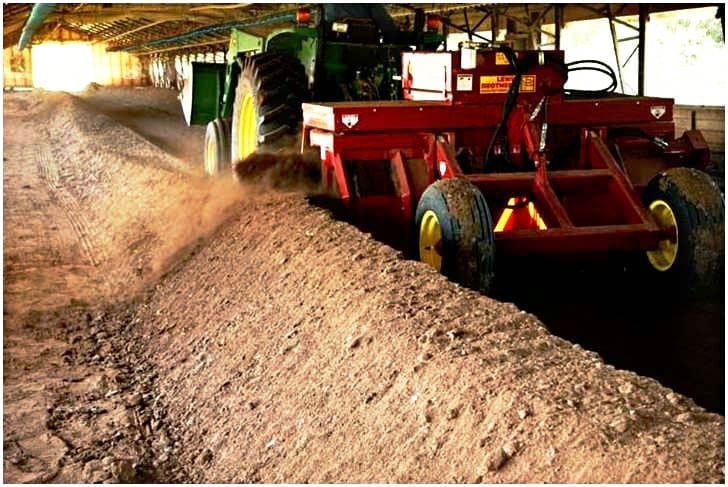 Litter is a combination of bedding material, excreta, feathers, and spilled feed and water. Bedding material is a crucial component to litter, as its role is to absorb the excess moisture from droppings and drinkers and promote drying by increasing the surface area of the house floor. Bedding acts as an insulator to protect chicks from the cooling effect of the ground to create a comfortable living environment.
Litter is a combination of bedding material, excreta, feathers, and spilled feed and water. Bedding material is a crucial component to litter, as its role is to absorb the excess moisture from droppings and drinkers and promote drying by increasing the surface area of the house floor. Bedding acts as an insulator to protect chicks from the cooling effect of the ground to create a comfortable living environment.
Litter will act as a sponge to soak up moisture from the environment and allow it to dissipate and evaporate back into the air. Therefore, bedding must be absorbent and dry reasonably well, and because both chickens and humans will be in regular contact with it, it should be non-toxic. The best bedding materials will also serve a useful secondary purpose – as potting soil, fertilizer, or cattle feed – be readily available, and cost effective.
A wet litter environment is ideal for bacteria and ammonia production. Excess litter moisture causes breast blisters, skin burns, foot pad lesions, bruising, blindness, and condemnations. It can lead to illnesses like mycotoxicosis, Newcastle disease, and E. coli.
Particle size of the litter can impact bird health. Corn cobs or wood chips that have a particle size larger than 30mm can hurt birds’ feet and cause conditions like bumblefoot or breast lesions. Similarly, bedding types like sawdust that have a particle size smaller than 2mm can cause respiratory issues as the dust created contains bacteria, viruses, and fragments of fungi and spores.
Successful litter management accounts for litter type, time of year, depth of litter, floor space per bird, feeding practices, disease, kind of floor, ventilation, water systems, litter amendments, and fertilizer value. Pine shavings are the most popular bedding choice though they are becoming harder to find in many areas. Rice hulls and straw are also popular choice, especially in the south where rice is readily available. Straw is affordable and easy to come by but has its challenges if not managed correctly. And sand has been studied more and more recently, showing promise in poultry houses, though it can be hard to keep warm during brooding.
Regardless of the bedding of choice, it’s imperative that good litter management is practiced. Houses should be decaked between flocks if the litter is to be reused. Adequate ventilation must be provided to remove the moisture laden air from the barn. Using circulation fans helps to dry the litter by creating a slow-moving breeze over the floor. Water lines should be monitored closely to ensure that birds are drinking at the right height, water pressure is consistent with growth stage, and leaks are kept to a minimum.
Illnesses or additives can influence fecal matter. Keep an eye out for abnormal droppings, and act on diagnosis and treatment as soon as possible to limit the effect on the flock. Good management is always the most important factor in rearing healthy birds.
Subscribe to our blog!
